- en
Pet InfoRx®
Dog Weight Management
Your dog is packing on some extra pounds. Don't worry, they can be an ideal body weight again with a little bit of extra effort on your part.
This pet information prescription will help you know what to do, how to help your dog transition to an ideal weight safely, and how to prevent weight gain from happening again in the future.
Quick Links
When Dogs Are Too Fat
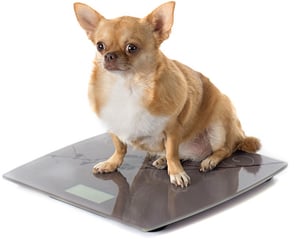 Nearly 56% of the dogs (and nearly 60% of the cats) in America are overweight or obese. With both conditions, excessive body fat causes inflammation. This inflammation can lead to lifelong diseases such as diabetes, heart disease, hypertension, arthritis, and many others.
Nearly 56% of the dogs (and nearly 60% of the cats) in America are overweight or obese. With both conditions, excessive body fat causes inflammation. This inflammation can lead to lifelong diseases such as diabetes, heart disease, hypertension, arthritis, and many others.
Even before these diseases develop, overweight and obese dogs can struggle with normal day-to-day activities, including resting comfortably, getting up and down stairs, and regulating their temperature (particularly important for flat-nosed breeds like pugs and bulldogs).
Our mission is to help save dogs' and cats’ lives through our educational content. To support our efforts, this page may contain affiliate links. We earn a commission for qualifying purchases – at no cost to you.
What Does Being Overweight or Obese Really Mean?
Dogs are considered overweight when they are 10–20% above their ideal body weight. Obese dogs are 20% or more above their ideal body weight.
Common symptoms of being overweight or obese include a reluctance to exercise, difficulty getting up from a resting position, slower movement, labored breathing, and an overall decrease in activity.
Left unchecked, overweight and obese dogs can develop lifelong diseases, including diabetes, arthritis, hypertension, heart disease and more. In addition to being uncomfortable in their daily lives, your dog's lifespan may be shortened.
How Did This Happen?
Weight gain occurs when dogs consume too many calories and don't exercise enough to burn these calories off.
While there may be some breed, genetic, and sex (spayed vs unspayed) predispositions, becoming overweight or obese is most commonly a result of being fed too much. Very few dogs will self-regulate how much food they eat. As a result, it's important that owners feed a measured amount only at mealtimes (avoid having bowls out all the time), account for the calories in treats, and make exercise a part of their daily routine.
Occasionally, weight gain can be the result of a medical condition like diabetes, Cushing's disease, or hypothyroidism. If your dog has other symptoms (particularly if they are drinking more, urinating more, or have a skin condition), your veterinarian may recommend diagnostics to rule out any other conditions.
What You Should Do If Your Dog Is Overweight
The first step in treatment is identifying there is a problem, and for every member of your dog’s household to understand it and the potential impact it can have on your dog’s health. Just like with human dieting, there can't be any cheating! If one family member is trying to control your pup's weight with portion control and exercise, but another family member is slipping them extra treats, your dog won't make any progress ... and their health will suffer.
After your veterinarian has diagnosed your dog as overweight or obese, it’s important to follow their nutritional recommendations and their exercise guidelines. Get a labeled measuring cup and properly measure your pet’s food (e.g., 1/4 cup) so you can be sure you’re giving the right amount your veterinarian recommended. Cut out any and all people food (table scraps) and reduce their treats – most dogs are just as happy with a few pieces of their kibble as a high-calorie dog treat. Make sure kids and neighbors aren’t sneaking in any extra treats!
The next step is incorporating regular exercise into your dog’s routine. Simple exercise could include:
- Playing fetch (which can be done indoors if you have the space, like a carpeted hallway),
- Going on long walks
- Hiding their meal of kibble around your home for them to find (mental exercise is good too!)
- Introduce your dog to playing with a flirt pole (indoors or outside), which is an easy way to get your dog moving without having to match their pace yourself. See a flirt pole in action.
- Practice "puppy push-ups," where your dog does sit-down-sit-down-sit-down before getting a piece of kibble
- Teach them active tricks, such as spin or figure-8 moves between your legs or around cones
- Build up your dog's muscle and body awareness by teaching them to put their front paws on a balance disc or a cushion. You can up the ante with the balance disc by teaching them to sit on it and then asking them to "sit pretty" or beg, which is a major ab workout! You can also do this without a balance disc.
- Short intervals on a treadmill (never unsupervised though!)
If your senior dog is overweight, be careful to not overdo any physical exercise and choose appropriate activities for their aging body. Instead of long, continuous walks, take them on a sniffari where they can meander and sniff. Or take shorter walks frequently throughout the day. Based on your dog's specific health conditions, your veterinarian may be able to recommend specific types or amounts of exercise.
Check out more fun games and DIY toys to engage your dog's mind and body.
Have Your Dog Do an Official 'Weigh-In'
It is important to weigh your dog at home and keep a journal of their weight history. You will need to alert your vet if there are any drastic changes. In order to get an accurate weight on your pooch, simply weigh your dog alone on the scale if possible or hold them in your arms while you're on the scale and then subtract your weight without your dog. This will give you your dog’s weight.
If you have a large breed dog or don't have a scale at home, most veterinary practices and pet stores have scales that they'll let you use at no cost, so plan to stop by with your dog and get a weigh-in!
Keep Your Dog Comfortable
Start small – even if your pet is reluctant to exercise, even walking out to the mailbox and back can add up. Increase how long and how frequently you exercise your dog over time.
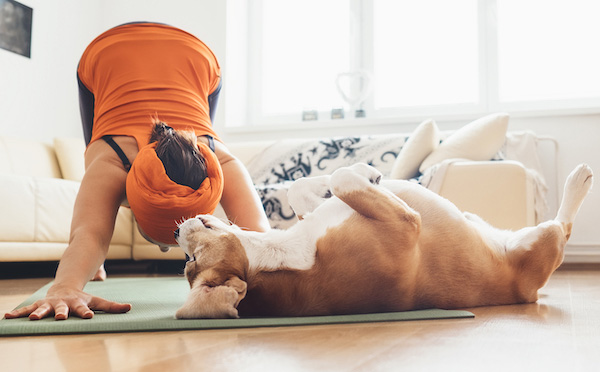
Be Careful to Not Over-Exercise Your Dog
Have you ever worked out and then been so sore that you can't move for a day or two? The same thing can happen to your dog! Overexercising can also result in increased behavioral issues, such as anxiety or "out of control" excitement. It's important to introduce a new exercise regimen slowly and not overdo it. Watch for these signs of over-exercise:
- Excessive panting during or after exercise – or your dog doesn't recover quickly, i.e., their panting goes on too long
- Unable to settle or restless behavior after exercise
- Torn up or injured paw pads (from long walks)
- Drinking excessive amounts of water after exercise
- Stiff and slow movements, limping, or sensitive to petting (this might indicate sore muscles and joints)
- Not wanting to go out for walks or engage in indoor exercise and play
Reach out to your veterinarian if you're unsure if your pet's exercise is the right difficulty or amount.
When Your Dog Gets 'Hangry'
Your dog will definitely notice the decrease in calories and might act like they are starving all of the time. To prevent any "hangry" behaviors, like begging, eating their meals too quickly, whining, or increased resource guarding behaviors, try these tricks:
- Feed smaller meals more frequently throughout the day. Portion out their daily amount of food into three meals a day instead of just one or two mealtimes.
- Put their meals into work-to-eat puzzles or slow-feeder bowls. Check out some options for interactive feeders.
- Increase the "amount" of food they're consuming without adding lots of extra calories by incorporating a few fresh carrots, peas, or broccoli.
Once you hit that goal weight, don’t slip back into old habits – keep your dog at an ideal body weight! This will decrease the risk of certain lifelong diseases. Remember, you should be able to feel Fido’s ribs!
How Do You Know Things Are Improving?
You should weigh your dog every month, and you should be seeing a slow but steady reduction in weight.
Your vet will help ensure that the weight loss is not too rapid or excessive, and they will instruct you when your dog has reached their ultimate weight loss goal.
Your dog could start having more energy and a desire to play. You might just get your "puppy" back!
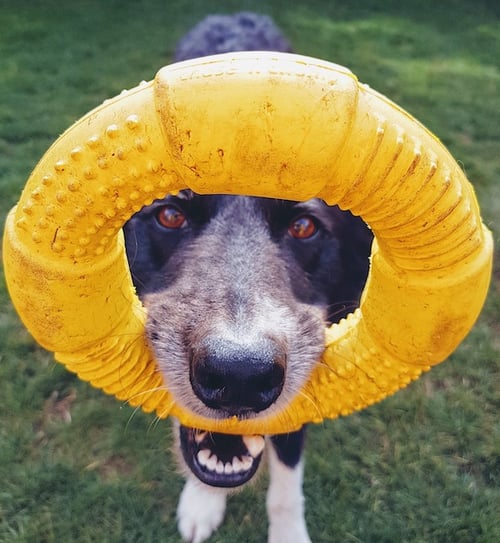
How Do You Know When Things Are Not Improving? What You Should Do.
If your dog has not lost any weight in 2 months, you should consult your veterinarian. Your vet may recommend additional diagnostics to find out why your companion isn't losing weight or make changes to their specific diet.

How to Prevent This from Happening in the Future
The best prevention is to keep your pet on a strict diet (no table scraps) and daily exercise!
The Pet InfoRx® is made possible, in part, through our partnership with AlignCare®.
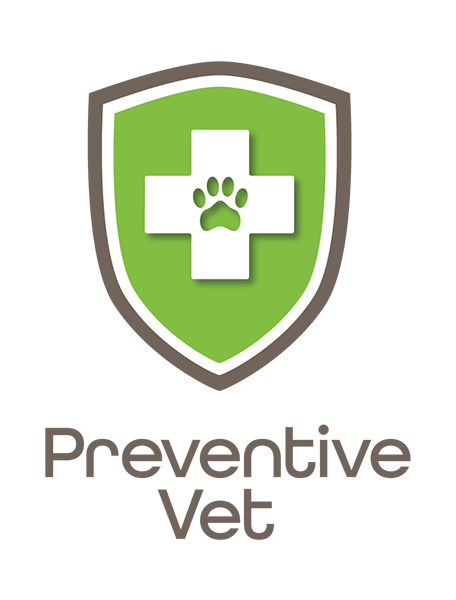
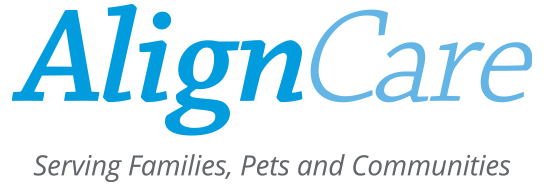
© Preventive Vet. All rights reserved. PreventiveVet.com

